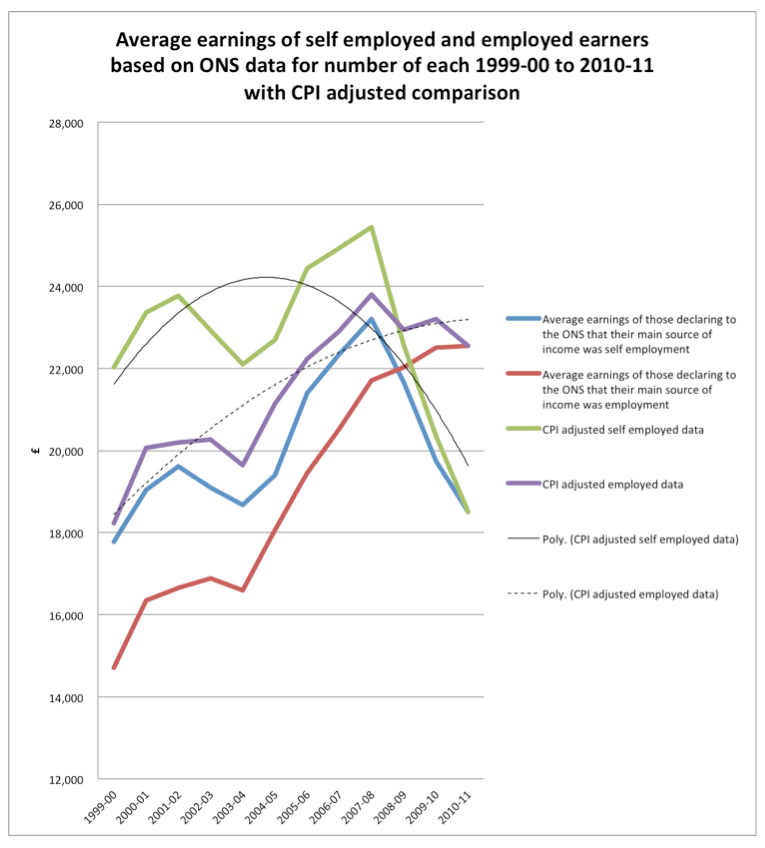Finding Hidden Income Analysis of SelfEmployment Income
Post on: 25 Апрель, 2015 No Comment

January 2010
The goal of this article is to identify the common ways that self-employment income may be understated, either deliberately or inadvertently. This article was written to assist professionals in determination of income for the Child Support Guidelines, but is equally relevant to other uses. In many cases, this is a simple process; in others, it can be quite complicated. Interpretation of personal tax returns and business financial statements is not necessarily an aptitude possessed by those who are involved in this process. Ideally, in complex situations, a professional accountant with a thorough understanding of the Child Support Guidelines will be involved. The goal of this article is to identify the common ways that self-employment income may be understated, either deliberately or inadvertently. If your are aware of these situations, you will hopefully be able to identify situations where further actions can be taken to obtain a fair income figure.
The following questions will be discussed:
- How do business owners understate their profits in order to reduce their income for child support and/or tax purposes? How can we find these types of adjustments?
- How much reliance can we place on financial statements?
- What special issues arise when evaluating farming or fishing income statements?
- What payments or personal benefits may be made to spouses and where are they on the financial statements?
- Paragraphs 9 and 12 relate to payments or benefits to related parties and capitalization of income. What additional comments may be appropriate in these areas to ensure fair calculation of income?
1. How do business owners understate their profits in order to reduce their income for child support and/or tax purposes? How can we find these types of adjustments?
There are two approaches to hiding income legally and illegally. It is less likely that an illegal approach is being used if the financial statements are reviewed or audited by a professional accountant. However, this is not a guarantee. Typical situations to watch for include the following:
Illegally under-reporting sales transactions or overstating expenses.
This is the infamous underground economy. Under-reported sales are typically apparent where businesses insist on collecting cash instead of cheques for sales of goods and services and do not issue invoices. This theory is that these transactions will not be found by the Canada Revenue Agency. There are a few clues available which may detect this type of activity, as discussed later.
Overstating expenses may include charging many personal expenses through the business, or artificially inflating expenses with false amounts. These items are easier to find by the Canada Revenue Agency because they have access to the detailed books and invoices. For Guideline income purposes, we may only have access to the financial statements.
Aggressively, but legally, claiming expenses to reduce taxable income.

This situation typically arises when a person can make a case that an amount is a business expense versus a personal expense. An example would be an entertainment expense where a taxpayer argues the amount was required to increase future business opportunities, but there is no specific evidence that it was either a necessary expense or that it resulted in sales increases. Paying high wages to employed family members is another possibility.
Making short-term business decisions to temporarily defer income.
Business owners can often affect the timing of their income. While possible in most businesses, this practice is particularly used by farmers and fishermen who elect to report income on the cash basis and by service businesses that can delay their invoicing.
An example would be where the business owner has confirmed a major sale, but has requested the customer to postpone the transaction until next year, resulting in lower sales and lower income for the current year. Although this will result in higher amounts in the following year, the child or spousal support claims may be settled by that time.
Maximizing use of legitimate tax deductions.
Some individuals are more aggressive at using tax deductions than others. For example, persons who use their vehicles for business purposes may claim expenses for these vehicles. Also, an office within a principal residence may be claimed to the extent that the expenses are reasonable. Other similar situations are legally allowed, but care is required because allocations between personal and business use may not always be reasonable.
In addition, certain deductions may not require an extra cash outlay by the spouse. An office-in-home can be used to reduce taxable income, but should it reduce Guideline income? The deduction may not reflect an increase in household costs, but rather an allocation of costs that would be incurred whether or not the house was used for work.
Finding the income
To find these types of adjustments, the process starts with a careful review of the underlying financial information looking for unusual amounts, or amounts which result in unreasonable ratios within a financial report. This is an important reason to obtain three years of information, and looking at each year for inconsistencies. A good relationship with an experienced accountant will help you in these situations. Obviously, you should interview your client for leads, since most parents know a lot about their spouses business practices. You should ask yourself the following questions after reviewing the financial statements:
Does the spouse make enough income to pay normal everyday expenses?
If all sales transactions are not being reported, you may find that the income statement consistently reports a very low amount. In this case, you must question how that person can live on such a low income. Of course, in legitimate situations, an individual may be living off accumulated investments from past successes in which case there should be investment income reported on his or her personal tax return. They may be receiving support from relatives, or there may be some other reasonable explanation.
When looking at net income for this purpose, there are three common adjustments you must make to convert unincorporated business income to cash flow available to the owner. A cash flow statement (also called a statement of changes in financial position) will readily provide this information, if available. Expenses typically include depreciation or amortization, which is a figure deducted for expiry of the useful life of assets used in the business. It may be a deduction for wear and tear on equipment and buildings, or the write-off of goodwill or franchise costs over their estimated useful life, for example. This expense does not use cash, so it should be added back to income to estimate cash flow available to the business owner.
On the other hand, if capital assets are bought during the year, cash is used but not reported on the income statement. Purchases of capital assets will increase the carrying value of these assets on the balance sheet, but should not affect the income statement other than through depreciation or amortization as discussed above. Likewise bank loan proceeds and repayments are not reported on the income statement. To determine how much income the owner had to live on, these factors (and possibly others) must be considered.














